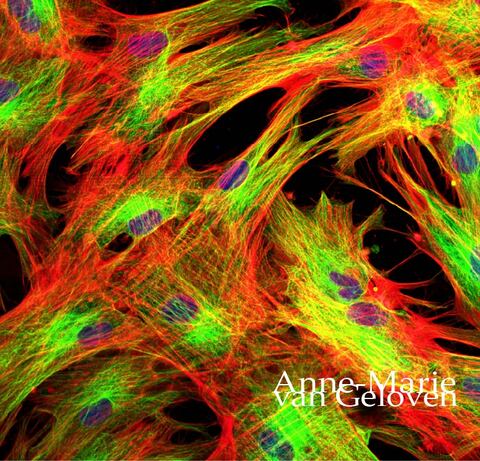
The fibroblast is one of the most important cells involved in ageing skin. You can find it in the lower layer of the epidermis and the dermis. It has many functions, one of which is the production of key components like hyaluron (filling + hydration), collagen (strength + structure) and elastin (flexibility + stretch). It particularly has to work hard to replenish hyaluronic acid or hyaluron as this filling component only has a half-life in the skin of several hours up to a day. Good quality collagen can last 15 years and elastin up to 70 years. It is also believed to be involved in the clean-up of dysfunctional components, like for example broken elastin, which is visible photodamage-damage and called solar elastosis. Fibroblast senescence (agedness) does also increase the risk of age spots. In proper ageing skin management, the fibroblast is a key target-cell.
Many aesthetic in-office treatments like ultrasound, radio-frequency, chemical peelings, laser etc. are based on causing controlled damage to the skin provoking wound-healing. This is the base of their rejuvenating or aesthetic impact. The number of new fibroblasts (myofibroblasts) is increased during the wound-healing process. Some injectables, like for example hyaluron-fillers cause the fibroblasts at the injection site to stretch and bio-stimulate collagen production. There are specific bio-stimulating injectable treatments. The most popular ones are Sculptra®, Radiesse®, Ellanse®, and a new one which combines hyaluron-filling and bio-stimulation is HArmonyCa®. As we age the fibroblast is undergoing some changes because of intrinsic and extrinsic factors. It loses it’s production power, it flattens, loses mechanical tension and therewith the ability to interact with other cells in the skin. It is becoming “tired and deaf”. My hypothesis was that injecting large droplets of hyaluron into the dermis might cause the fibroblast to become “lazy” via a negative feedback mechanism: when something is present in abundance, the fibroblast might not be stimulated enough to work hard to replenish it. This is not yet scientifically proven. It is important to keep the fibroblast in good shape and biologically active. We can stimulate it’s biological activity with skincare containing bio-stimulators, or ingredients which activate the production of important skin components by the fibroblast. On the other side we need to protect the cell from damage. Bio-stimulating active ingredients in skincare which have shown to particularly stimulate the fibroblast* are for example:
Protection from photo-damage we can achieve with a combination of sunscreen and anti-oxidants, more specifically Licochalcone A. Licochalcone A has a proven broad ability to protect the skin from damaging free-radicals or oxidative stress from UVA, UVB and HEVIS (High Energy Visible Light) affecting keratinocytes and fibroblasts. I am not yet aware of skincare ingredients which increase the number of (new) fibroblasts, like the semi or minimal invasive in-office treatments. It’s an interesting field to explore if this is possible without injury, inflammation or irritation. However, you probably get "more bang for your buck" by starting a a skincare routine with focus on bio-stimulation and protection of the fibroblast pre- and post minimal and semi invasive aesthetic treatments. This could be something we will proof with a clinical study. Take care *in vitro
Comments

We all learned that sleeping in make-up is the ultimate skincare sin. What is bad about it is when you go 24 hours without washing your face and end up going to bed leaving your day-time make-up on. Over the course of the day, our skin accumulates pollutants, dirt and dead skin-cells.
If dirt and pollutants are left on the skin, they may cause micro-inflammation and contribute to premature ageing skin via a process called inflamm-aging and free-radical damage which is a major contributor to skin-ageing. The combination of both micro-inflammation and free-radical damage is called ox-inflammation. We should aim to reduce or preferably avoid it. Pollution, dirt and sebum (oils) can impact the skin's healthy pH balance and thus lead to a weakening of the skin barrier function, more sensitive skin, dehydration, slowed down skin-cell renewal process and thus ageing. Not removing dead skin cells together with dirt increases the risk of clogged pores. Make-up itself usually doesn’t contain harming ingredients. Coloured micro-pigments actually provide additional sun-protection. Make-up or foundation itself is thus not the problem, however the fact that we don’t cleanse our skin after a busy day and/or evening is what could make us age faster. Not doing your PM cleanse and care routine is anyway a missed opportunity to support your skin’s night-time recovery with beneficial active ingredients. If you go out in the evening, take the opportunity to cleanse before getting ready and get rid of debris which was accumulated during day-time. Don’t worry about falling asleep in your make-up once or twice. Just don’t make it a habit. I would always aim to remove eye make-up. Sleeping in full eye make-up (mascara, liner, eyeshadow) increases the risk of an eye-inflammation, redness and corneal abrasions. Waking up with “panda-eyes” filled with black rheum or goop isn’t pretty either. Take care 2/18/2023 Comments Skincare peri and post menopause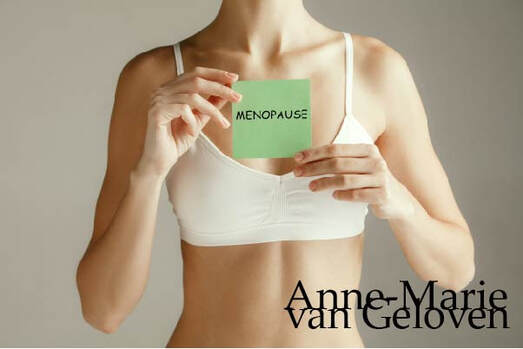
Our life expectance is increasing and the average age when menopause occurs didn't change much in the last decade. This is why more women will have to care for post menopause skin for a longer time. During and after menopause our skin will go through some changes and might even become problematic. In this blog post I will have a closer look into these changes.
Change During the start of menopause, also called peri-menopause, women will notice some changes to their skin. This is because estrogen levels start to decline (-35% between age 35-50) and as estrogen level decline, androgen level proportionately become more dominant. As a result, the majority of women experience drier skin. Or when the hormone levels are differently balanced they may get a more oily skin or develop acne tarda (adult acne), because the oil gland activity is increased. Another problem is that the skin's pH level will increase, which will impact skin health, barrier and microflora or microbiome. A higher pH value may result in problematic skin. Loss of biological activity Around this period the metabolic biological activity in the skin will decrease faster than in our 20s or 30s. The production of important components like hyaluronic acid (filling + hydration), collagen (strength + structure) and elastin (flexibility + stretch) by fibroblasts (a very important skin cell) isn't sufficient, while the speed of their degradation is inclining because the skin's natural resilience against damaging free radical activity is reduced and the activity of degradation enzymes, like hyaluronidase, collagenase and elastase is elevated. Therewith the presence of those important skin components is declining 30% in the first years. This leads to more advanced signs of ageing skin and an overall loss of skin quality: skin firmness, skin surface eveness, skin tone eveness and glow (Goldie, Clin Cosmet Invest Dermatol, 2021). Solution Skin ageing is a multifaceted continuous biological degenerative process, with an impact on overall skin quality, self perceived attractiveness, confidence and comfort (Quality of Life). The optimal solution should improve all 4 emergent perceptual categories or EPG's of skin quality (an important component of human attractiveness) as mentioned above. This can be achieved by supporting skin's own resilience against the inclined loss by degradation (reduce free radical and enzymatic activity) and increase skin's own biological activity, hence skin's own production of hyaluron, collagen and elastin with bio-active ingredients or bio-stimulators and inhibit human tyrosinase activity (reduce age spots). I will explain the 4 key actions below: 1. Bio-stimulators Some evidence based bio-actives we can find in skincare are:
2. Enzyme inhibitors Some ingredients in skincare which inhibit enzymatic degradation are:
3. Anti-oxidants Damaging free radical activity is increased in mature skin and ROS (Radical Oxidative Species) increase degradation of all components, enzymatic degradation and human tyrosinase activity, a powerful cocktail of anti-oxidants is a "must-have". The combination of fresh activated L-Ascorbic-Acid (primary defence with instant neutralisation of extra-cellular free radicals) and Licochalcone A (secondary defence with long-lasting intracellular stress protection is a valuable addition in any day or nighttime skincare regimen. Licochalcone A is moreover one of the most powerful anti-oxidants (if not the most powerful one) proven to reduce (deep) oxidative stress from High Energy Visible Light or HEVIS. As we know, free radicals from HEVIS damage the important skin-cell called the fibroblast and increase the risk of age spots. A product which development was initiated, supported and clinically tested by me is Eucerin's Hyaluron-Filler Vitamin C Booster. I highly recommend this product, especially after a collagen-stimulating in-office procedure. 4. Human tyrosinase inhibition A relatively new, effective and safe ingredient in skincare which was tested on inhibiting human tyrosinase is Thiamidol. Other ingredients in skincare were tested on mushrooms (Hornyak, Journal of Investigative Dermatology 2018 & Mann et al. 2018) and are not potent in reducing human tyrosinase activity. It took 10 years of pioneering research (dr Ludger Kolbe) and comparing 50.000 actives to patent and market it. In the mean time Thiamidol is loved and recommended globally by many dermatologists and evidence based with 35+ studies including >2000 participants with all Fitzpatrick phototypes. Every AM routine should at least have a skincare product with SPF of 15 or higher. An improvement of skin quality leads to an improvement of quality of life (van Geloven et al. EADV 2022). Hope this was helpful. Take care 2/15/2023 Comments GENDERED AGEISM
According to a survey with responses from 729 participants aged 18- 70+, with 65% of respondents coming from the United States and the majority of the remainder coming from Canada, the UK and Europe ‘lookism’ often trumps the performance of women when they are evaluated and often are pushed to the sidelines and/or pushed out to make room for younger workers. Once terminated, women find it much more challenging to get rehired at a time when may they lack funds for retirement. The pressure is especially high on single women and mothers 50+, which is a fast growing demographic. In many countries the retirement age is 67 years. It's not acceptable to be seen as less valuable or even irrelevant the last 17 years of your career, while having a lot of value to offer to jobs, companies and co-workers.
Ageing is a beautiful journey of collecting knowledge and experience. It is a privilege, however gendered ageism a growing and relevant problem. Physical ageing is a biological degenerative process, which can't be completely stopped, but can be positively influenced. For example, I work daily with a team on the creation of evidence based skincare products to significantly improve visible signs of ageing and quality of life. This requires that >80% of users agree that the product makes them feel more attractive, confident and comfortable in their skin. Unfortunately more needs to be done and age discrimination laws are less effective for mature women (McLaughin LABOUR 2020). Therefore gendered ageism should be addressed in diversity & inclusivity initiatives. When I turned 50, I joined an initiative in the company I work for called "New Generation 50+". It's a work-in-progress, however a start to reduce and hopefully together stop (gendered) ageism in the workplace and society. We should not accept the devaluation of mature women (or men). Many feel almost "invisible". If they don't "see you", make people listen to you and speak up if you feel you are not treated fairly. Many companies focus on recruiting "young talents". I would like to challenging them to hire, engage and retain 45+ talents. Being talented doesn't have an expiration date. Take care 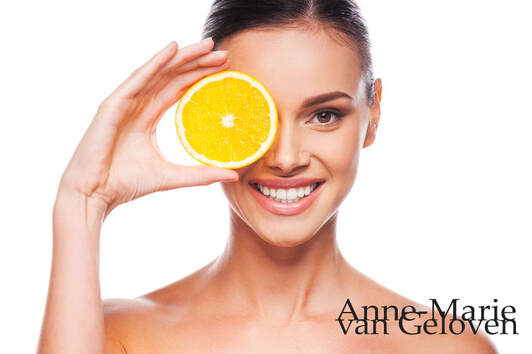
Vitamin C is a "must have" skin care ingredient our skin needs at any age.
One of the best researched skin care ingredients and proven to be very beneficial for skin is Vitamin C. Our skin uses Vitamin C as an anti-oxidant and the dermal fibroblasts need Vitamin C for the production of collagen. Two very good reasons to add this ingredients into your daily skincare routine whether you are twenty or eighty. Moreover, our skin depends on us for the needed supply, as our skin is not able to produce Vitamin C itself. We can either include enough Vitamin C in our diet or apply Vitamin C topically there where we need it the most. Usually this is the skin which is exposed to (sunlight) as this increases damaging free radical activity in our skin. An active form of vitamin C can reduce the free radical activity, which we call anti-oxidative effect. There are 4 things to consider when buying a skincare product containing Vitamin C:
Day or night? Some recommend to use Vitamin C during the night, as the active form of Vitamin C will oxidize in daylight. Hence, your skin can benefit from the Vitamin C longer during the night. I would recommend Vitamin C to be used during daytime (thus added to your morning routine), as we need protection from damaging free radicals the most during daytime and the oxidization of Vitamin C is actually a sign that the ingredient is doing it’s job! It’s even better to add Vitamin C both to your day & night time skincare routine. Is L-Ascorbid Acid enough? Vitamin C is counteracting free radicals from UV light. However, UV is not the only damaging light form as there is also High Energy Visible Light or abbreviated HEVIS. This penetrates even deeper into the skin where also the dermal fibroblasts reside. The dermal fibroblasts are our collagen and hyaluronic acid producing cells and a key target in an effective anti-ageing skincare strategy. Lichochalcone A (Licorice-root extract) has proven to be the most potent anti-oxidant to protect the dermal fibroblasts and neutralize free radicals from HEVIS. Moreover, Lichocalcone A increases Glutathione, which is a skin’s own anti-oxidant. Licorice-root extract is an anti-ageing hero. Summary The combination of Vitamin C and Lichocalcone A will protect our skin and dermal fibroblasts from free radical damage by UV and HEVIS and will provide superior biological cell protection in comparison to Vitamin C only. For me this is a good reason to use a product containing both ingredients as a first step after my cleansing routine in the morning. If you have sensitive eyes, I recommend to use an eye care prior, which will form a barrier to help to prevent the low pH Vitamin C product to migrate into the eye area. Afterwards you can use the other products of your skincare routine. I would like to put emphasis on using a SPF of 30 or higher during the day. This will not only help to protect your skin, but also support the anti-oxidative benefits and make them last longer. Hope this was helpful. Take care! 12/15/2018 Comments Aquatic wrinkles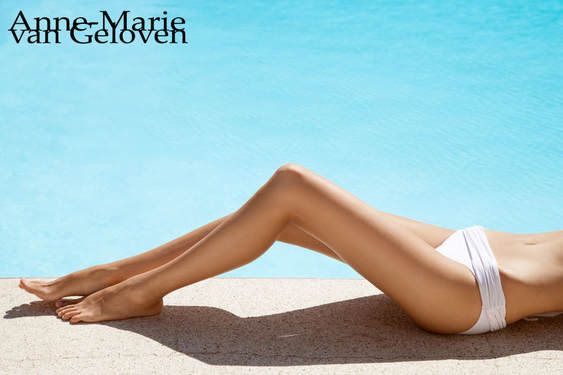
After about spending some time in bathtub or in the pool, we can notice that our skin on particularly finger tops and toes start to wrinkle up. This wrinkling effect is believed to have a function.
When wet, things tend to be more slippery and our sophisticated skin is designed to counteract this by wrinkling up in a pattern optimised to provide a drainage network that improves grip, much like the tires on a car according to a study. Link to original publication. However, other studies would contradict that there would be a functional benefit for so called aquatic wrinkles. The osmosis theory Water molecules moving trough a semipermeable membrane from a low concentration area to a high concentration area is a process called osmosis. The shrinking and expanding effects of osmosis takes place simultaneously outer layer of the skin, causing wrinkles. The skin's outermost layer is also known as stratum corner could be responsible for this wrinkly reaction, The top layer of our skin consists of dead corneocytes. The longer these cells are attached to the skin, the bigger they are. The size of the corneocytes we actually use to objectively measure the skin's renewal and desquamation (shedding of cells) process. These dead (keratin containing) skin cells may absorb water and swell. The lower layer with living cells doesn't swell up. As top layer (which is increased in size) is still attached to the layer beneath, a wrinkly pattern is formed. The layer of dead skin cells is thicker at the palms of our hands and soles of our feet, the wrinkling effect is more evident. This response occurs more quickly in freshwater than seawater. Moreover, when we are exposed to water for a longer time, the water-repelling film on top of the outer layer of the skin may get impaired. The sympathetic nervous system / microcirculation theory It's known that there is a relationship between the wrinkling-effect and blood vessels constricting (narrowing) below the skin. When hands and feet are soaked in water, the nerve fibres in the skin shrink and the body temperature regulators loses volume. Therewith the top layer of the skin is pulled downward and the wrinkling pattern is formed. It is proven that wrinkling-effect response is impaired, if the nerves and/or blood vessels are damaged. Therewith the wrinkling effect can even be used to determine proper functioning of the sympathetic nervous system and/or skin's microcirculation. There is evidence that the wrinkling effect is impaired in patients suffering from diabetes: link to article. Regardless the cause, aquatic wrinkles disappear fast and the skin returns to normal once the water has evaporated. Take care. 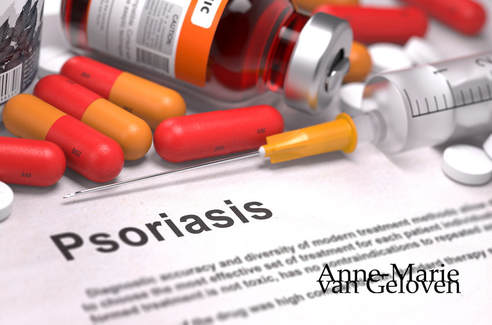
Psoriasis occurs in many different forms and levels of severity. The first signs may appear between the age of 15 and 35 and 75% of patients are diagnosed before the age of 46 according to the World Health Organisation. As there is no cure for the disease, the highest prevalence is seen in a more mature age group age 50-69. Many of the treatments which are part of the standard treatment guidelines for psoriasis cause as a side effect premature ageing skin. For example PUVA, next to being an effective treatment, does cause (severe) photo-damage. Many patients will undergo such treatments on and off or continuously throughout their life.
Although the primary goal of dermatology is to improve the functional attributes of the skin (health) and lessen the tremendous burden psoriasis may cause, ultimately one aims to improve the skin's physical attributes (appearance). Ageing skin is a biological degenerative process which influences the activity of collagen and hyaluronic acid producing cells (mainly fibroblasts) and leads to a decrease of skin components like collagen, hyaluron and functional elastin. Effective anti-aging skincare can support the protection of those cells and skin components (anti-oxidants and SPF) and thus slow down the fastened degenerative process. Some active ingredients (for example biologically active Glycine Saponin and Arctiin) have proven to effectively stimulate fibroblasts in the production of collagen and hyaluronic acid and thus replenish dermal components. Loss of those components and photo-damage eventually lead to visible signs of ageing. Although ageing skin is natural, premature ageing skin isn't necessary. Most patients will probably already use a moisturising facial skincare product. It makes sense to recommend anti-ageing skincare instead to be used in conjunction with treatments which as a side effect cause premature ageing skin, particularly for exposed areas like the face. As psoriasis oftentimes doesn't occur in the face (except in the hairline), anti-ageing skincare will pose a low to no risk to aggravate facial skin and there are anti-ageing skincare products available which have proven to be suitable for psoriasis patients. Take care. 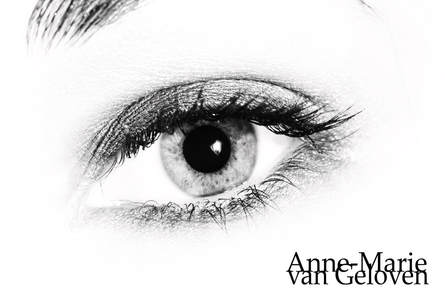
One of the frequently asked questions is, if it's necessary or if there is a benefit using a special eye care or cleansing products. Yes, there is!
As I mention in many of my previous posts, the right pH-level is very important for healthy skin. Skin usually prefers a pH of around 5. However there are some area's where the skin's natural pH balance is a little bit different. One of those area's is the area around the eyes. The preferred pH-level there is around 7, thus less acidic and more alkalic in comparison to your regular cleansing or care product for face or body. This is one of the most important reasons why I would recommend to use a special eye make-up remover and eye care product, as they are adjusted to the pH level most suitable for use in the eye area. Furthermore, special eye products are tested and proven to be safe when used around the eyes, while it isn't always recommended or proven for a regular face product. Some care products have a tendency to "travel" or migrate into the eye area. Even when not directly applied around the eyes, they might end up there. A special eye care product can form a "barrier" and thus help to prevent that unwanted products move to the eye area and cause irritation. I would particularly recommend the use of an eye cream when using other products containing gold standard anti-ageing active ingredients like Vitamin A, C (or derivatives of both), Hydroxy Acids (Alpha, Beta or Poly), when you have experienced some sensitivity of the eyes or eye area in the past or have a more problematic skin type. Eye care products preferably should not contain Vitamin C (L-Asorbic Acid or related) as it requires a low pH value of <4 to be active and do it's job properly. Eye care products with Vitamin C therewith are either too acidic to be used in the eye area or alternatively too alkalic for the Vitamin C to be effective. Safe to use in the eye area are products containing Hyaluronic Acid. Although "Acid" is in the name, Hyaluronic Acid isn't acidic. One of it's key functions is attract and bind water, which usually has a pH of ~7. Take care! 9/2/2018 Comments Safety checklist eye cosmetics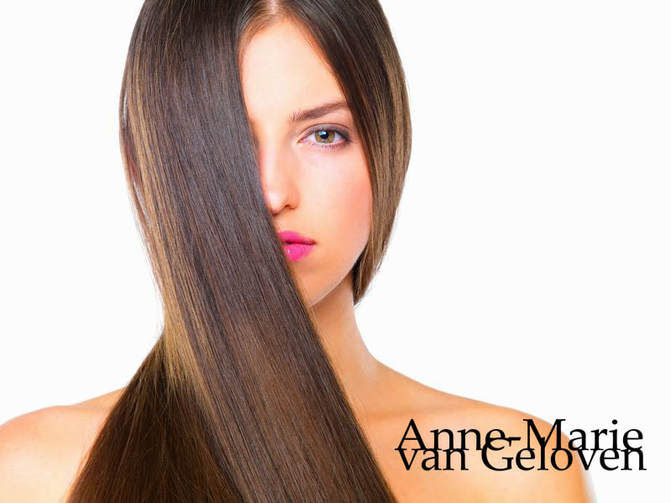
Safe use of cosmetics and care products is particularly important for the sensitive eye area. If you've ever or never had a problem, here is how you can avoid them..
Irritation If any eye cosmetic or care product causes irritation, stop using it immediately. If irritation persists, see a health care provider. Infection Avoid using eye cosmetics if you have an eye infection or the skin around the eye is inflamed. Wait until the area is healed. Discard any eye cosmetics you were using when you got the infection. Be aware that there are bacteria on your hands that, if placed in the eye, could cause infections. Hygiene Wash your hands before applying eye cosmetics. Make sure that any instrument you place in the eye area is clean. Don't share your cosmetics. Another person's microflora may be hazardous for you. Packaging Don't allow cosmetics to become covered with dust or contaminated with dirt or soil. Keep containers and nozzles clean. Don't use old containers or eye cosmetics and don't re-use containers. Never trust a product that smells funky, looks dirty, or past the open-jar time. Mascara Discard dried-up mascara. Don't add saliva or water to moisten it. The bacteria from your mouth may grow in the mascara and cause infection. Adding water may introduce bacteria and will dilute the preservative that is intended to protect against microbial growth. Manufacturers usually recommend discarding mascara two to four months after purchase. Storage Don't store cosmetics at temperatures above 85 degrees F or 30 degrees Celsius. Cosmetics held for long periods in hot cars, for example, are more susceptible to deterioration and bacteria. Some products are best stored in the refrigerator. Read the leaflet or follow the instructions how to best store the product. Application When applying or removing eye cosmetics, be careful not to scratch the eyeball or other sensitive area. Never apply or remove eye cosmetics in a moving vehicle. Don't use any cosmetics near your eyes unless they are intended specifically for that use. For instance, don't use a lip liner as an eye liner. You may be exposing your eyes to contamination from your mouth, or to color additives that are not approved for use in the area of the eye. Avoid color additives that are not approved for use in the area of the eye, such as "permanent" eyelash tints and kohl. Tools If you use make-up brushes or sponges, clean them every week with a special product or soap. Give them additionally from time to time an extra spritz with a disinfectant. Don't mix it up Sometimes you might feel to mix several products or add something to the product. Problems can arise if you challenge a product’s preservative capability, which is optimal and tested only with the original formula and packaging. Check ingredient list As with any cosmetic product sold to consumers, eye cosmetics are required to have an ingredient declaration on the label. Check if there is anything listed you don't tolerate or like. If the product doesn't have the ingredients listed, the product may be considered misbranded and illegal. Do the same for adhesives used for lash extensions or false lashes. Be aware of testers Keep in mind when you come across “testers” at retail stores that they might be contaminated. If you do sample cosmetics at a store, be sure to use single-use applicators, such as clean cotton swabs. Check how the store maintains their testers. If possible, ask for a sample, especially for care products. Using a few applications gives you a better idea about the compatibility (how well your skin tolerates the product), if you like the texture and enjoy the product. Take care. 9/2/2018 Comments Dermaplaning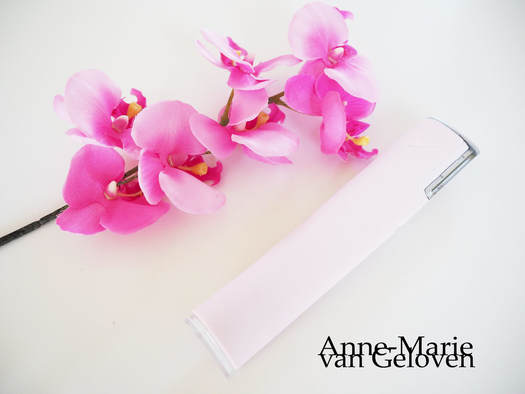
Dermaplaning is an exfoliation method done by dermatologists, plastic surgeons or aestheticians using a 10 gauge scalpel to gently scrape off the top layer of dulling dead skin cells in order to reveal a smoother fresh skin surface.
Furthermore you achieve a smoother make-up application as it also removes facial hair and peach fuzz or vellus hair. Cosmetic dermatologists sometimes use dermaplaning to help to prepare the skin for procedures like laser treatments and chemical peels as it creates a more optimal "canvas" to work with. As the top layer of the skin is removed, it would allow better penetration of skincare products. Dermaplaning is supposed to be suitable for almost all skin types except those with active acneic skin. However, I would be careful if you have fragile skin, are prone to get broken capillaries, red dots or redness. If done well, the procedure is painless and is comparable to shaving. Prior to the procedure, the skin will need to be cleaned and dried. Sometimes AHA and BHA (Alpha & Beta Hydroxy Acids) or a combination of both are used as preparation. The skin is pulled taut with one hand, and in the other hand a sterile 10 gauge blade (scalpel) is placed on the skin in a 45 degree angle. With short strokes, the dead skin cells and peach fuzz is "shaved" off. Dermaplaning instantly improves the skin's texture. The skin surface will feel very smooth. There is no downtime, however you may be left with some redness or sensitivity. It is claimed that vellus hair does not regrow darker or stronger, it just might feel different as the ends are cut off straight. However, speaking to dermatologists with experience in dermaplaning, they gave a clear warning that they did see a more coarse hair regrowth in costumers with darker skin tones (Fitzpatrick scale 3 or higher). There are some devices developed for dermaplaning at home. One of those devices is called Dermaflash and the device is shown in the article picture. It's currently only available in the US. I did try the Dermaflash. The design looks aesthetically pleasing, but found it to be quite large, thus suitable for bigger areas like the cheeks, however more difficult to use when more precision is requered around the brows, lips and nose. Some use a smaller and very affordable eyebrow razor. Although you may get satisfactory results after using a home device, the safest and best results you will obtain when dermaplaning is done by a professional. The treatment results will keep approximately 3 - 4 weeks. Ask your health care provider if dermaplaning would be a suitable exfoliation method for you. Personally, I prefer the use of gentle acids over any mechanical form of exfoliation, however both methods don't remove facial vellus hair. That could be a valid reason to opt for dermaplaning. Don't forget to use adequate sunscreen afterwards. click here to read more about chemical vs mechanical exfoliation Take care. 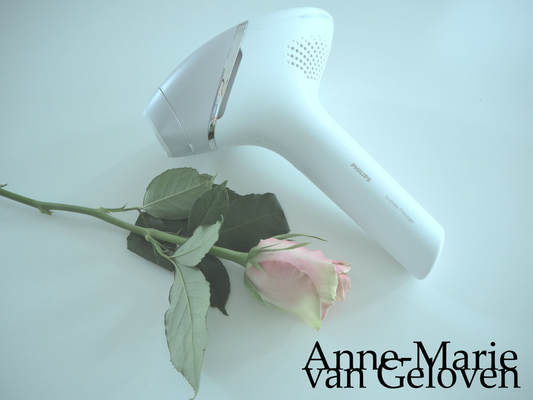
IPL stands for Intense Pulsed Light. The device applies gentle pulses of light to the hair root, putting the follicle into a resting phase. It uses a source of adjusted broad-spectrum visible light to target specific structures, like melanin pigment in hairs. The light energy is absorbed and transferred as heat, causing damage to the hair follicle. As a consequence, the amount of hair growth gradually decreases. Repeating the treatment would leave your skin hair free and smooth. This sounds good enough for me to try out IPL at home.
A few months ago I was given the opportunity to purchase the Philips Lumea Prestige, which is a home-device for IPL (not the same as laser) hair removal, with a discount. Although sceptic about the promised benefit, I started to use the device, as instructed ever 2 weeks and have finished the basic sessions of 4 times. My unwanted hair growth isn't much and the colour isn't dark, however I dislike even the slightest feeling or visual of having a "beard" on my legs or armpits. It would be so much easier, if I wouldn't feel the need to razor it away every few days. About Philips Lumea Prestige Philips claims that the treatment is safe and gentle, even on sensitive areas. Philips Lumea is clinically tested and developed with dermatologists. Their studies show up to 92% hair reduction in as little as 3 treatments. The first 4 treatments must be carried out every 2 weeks, after which you should already be able to see the desired results. To maintain your results, simply touch up every 4 weeks. After just 8 touch-up treatments you can be hair-free for 6 months. Philips Lumea Prestige works for a variety of hair and skin types from naturally dark blonde, brown and black hair and on skin tones from very white to dark brown. As with other IPL-based treatments, Philips Lumea cannot be used to treat white/grey, light blonde or red hair and is not suitable for very dark skin. This is due to the high contrast required between the pigment in the hair colour and the pigment in the skin tone. Therefore it's also not recommended for those who love to maintain a tanned skin, and use it pre- or post tanning sessions. The device can be used in many areas and even has special attachments for sensitive, body and face. My experience The model I purchased can be used with and without cord. The first time, I had to reload the device when I was half-way on my second leg. Therefore every other treatment I was using the device with the cord and could avoid an empty battery and waiting for it to recharge. What I like is that there are no other "hidden" or additional cost involved. You buy the device, and it just works and will give long-term return-on-investment. I've started to notice a significant reduction of hair regrowth already after 2 sessions and can honestly say that my legs feel smoother with a noticeable decreased number of hairs and hardly need to use a razor in between sessions. After 4 sessions I don't need to shave or use the Lumea for weeks and actually almost forgot about my unwanted hair. Therewith I am very satisfied with the results. The use of the device is very easy when you follow the instructions. It's recommended to shave prior to use. Place the device on dry skin and wait for the "ready" button at the backside to light up, press the button and a red flash will appear then move it over to another spot. Repeat till you've covered the area you want to treat. You can use several strengths (energy settings) from 1 to 5. 1 being low and 5 being high. I've been using 4 & 5, and did not find it painful. The feeling is hardly noticeable to slightly uncomfortable, however way more comfortable when compared to epilation devices, which I consider painful. One leg takes me around 10 minutes, so it's not very time consuming. The red flashes can be a bit annoying for the eyes, therefore I look away during the flash. Conclusion I am really impressed with the results that I got from this home-device and did not expect it to work that well. It is (probably) less effective than IPL treatments done by professionals. If you like to reduce razor use, or dislike epilation or waxing and desire to be more care-free about unwanted hair growth, it is worth to further investigate if this or a similar approved home device, laser hair removal or IPL by a professional could be suitable for you. If you suffer from any skin disease or pigmentation problem, talk to your dermatologist before using any home device! Take care. Interesting study IPL face: https://www.ncbi.nlm.nih.gov/pmc/articles/PMC4509583/ This post is not sponsored. 7/22/2018 Comments Skin care with something blue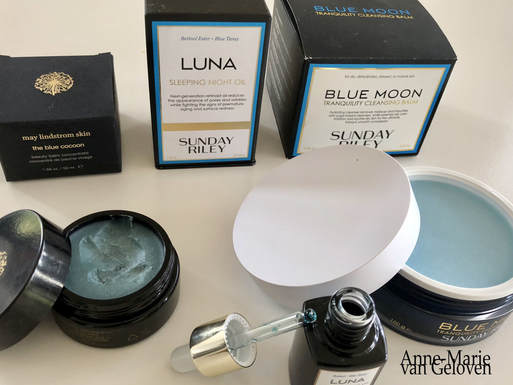
Lately I was trying out several skin care products with a very similar smell, which I actually started to appreciate during my evening skin care routine.
Usually, an overpowering fragrance in a product puts me off, however I consider this one soothing. The (in my opinion) pleasant odour comes from an ingredient called Tanacetum Annuum or Blue Tansy (Moroccan Blue Chamomile - not to be confused with Tanacetum Vulgare) and is found as the signature ingredient in some more luxury "Blue" products like May Lindrom's beauty balm concentrate called "The Blue Cocoon", Sunday Riley's tranquility cleansing balm called "Blue Moon" (Blue Tansy Leaf oil) and her sleeping night oil called "Luna". All products are relatively "oily" and you only need the littlest amount. Blue Tansy is "calming", as it supposed to have anti-inflammatory and anti-allergenic, anti-histaminic and anti-fungal properties. Tanacetum Annuum is an essential oil with a very dark blue collar due to chamazulene. The aromatic description is sweet, warm fruity, with subtle floral, camphorous and herbaceous undertones. It's most often mixed in with other oils or ingredients to dilute it, as the recommendation is not to use concentrations above 5%. Although it has anti-inflammatory properties, some might have intolerance for it as it contains camphor, which can cause sensitivity. Therefore, I would not recommend to use multiple products containing Blue Tansy in conjunction. Pure Blue Tansy oil is not easy to get hold of, thus an expensive ingredient. If I was asked choose one product, I would pick Sunday Riley Luna sleeping night oil which also contains Retinol. Luna is easy to use and incorporate in a night time regimen, is less expensive when compared to May Lindrom's "The Blue Cocoon", very popular amongst "beauty guru's" and receives many positive reviews. Alternatively, there are other evidence based skin care ingredients with proven anti-inflammatory properties, for example Arctiin (anti-inflammageing, stimulates hyaluronic acid and collagen production) and Licochalcone (also powerful anti-oxidant). They don't have the blue colour or "calming" odour, which some may find offensive. Hope you enjoy healthy skin & take care. 7/22/2018 Comments Chemical or mechanical exfoliation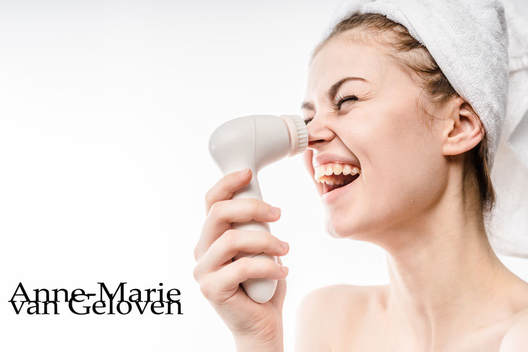
We can support's skin natural exfoliation process in various ways, for example with mechanical or chemical exfoliation.
Desquamation (shedding of skin cells thus exfoliation) is an important part of the skin's natural regeneration or renewal process. Already in our twenties, this process slightly, however increasingly starts to slow down (Kligman 1983). As a result, the cells on the surface of our skin (corneocytes) become bigger (Kligman 1989) and a little disorganised. This leads to a duller appearance (loss of radiance) and a more rough texture of our skin. A very comprehensive comparison of both methods:
The word "acid" unfortunately sounds very harsh and skin-unfriendly. Many acids are actually skin's own, like for example lactic acid is a skin's own natural moisturising factor (NMF) and so is hyaluronic acid. The level of NMF's decrease as we age and our skin my lose the ability to maintain well hydrated. Many years ago the benefits of lactic acid were capitalised by using baths filled with donkey milk. Citric acid is commonly used in skin care products and toners to balance skin's pH. Gluconolactone is only gradually penetrates skin and is very gentle.
It's unfortunate that "acids" have such a negative connotation, as our skin (healthy and problematic) can benefit if we use them regularly. Moreover, I prefer this method over mechanical exfoliation for all skin types, however particularly if you have dry skin, acne- or redness prone skin, sensitive skin or mature skin. The risk of exfoliation is over-exfoliation. Over-exfoliation is damage of our skin barrier and the symptoms are very comparable to dry or (hyper) sensitive skin symptoms, which are: redness, irritation, tightness, excessive dryness, dry patches, flaking skin, uncomfortable stinging, or even burning sensation. Whenever you experience one or more symptoms of over-exfoliation, it's recommended to reduce the number of times you exfoliate and support the skin barrier repair with a moisturiser. Hope you enjoy healthy skin & take care. 7/15/2018 Comments Facial oils bad for skin?!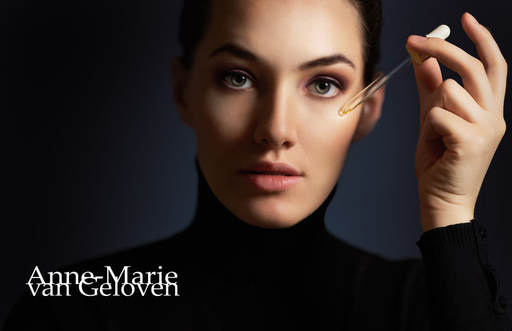
Facial oils are a trending skin care product at the moment, loved and recommended by many "beauty guru's" and skin care experts. This is why I found it very interesting to read a comment written by a well respected dermatologist claiming that face oils would stifle skin renewal and exfoliation and would make skin dull over time. She must have a reason why she is saying this, and that's why I looked into this a little bit deeper.
To start with, I've done own research (not just me) with a facial oil, included many testers and found many benefits and no draw backs during the duration of the study. Moreover, I jumped out of my chair (literally) when I saw the visible results from the clinical photography, no joke! We've found that the oil (a combination of Argan oil and Lady's Thistle oil) improves moisture, elasticity and firmness, supports skin resilience, making the skin feel smooth and look more radiant. There was even a reduction of comedones detected. The results were published in a poster, accepted by the European Academy of Dermatology and Venereology in 2016. If you are an impatient person, and demand a fast answer, I can spill the tea right now: I've found no data to support that facial oils would stifle skin renewal and exfoliation, but the opposite. Moisturisers absolutely influence the skin barrier function and TEWL (transepidermal water loss - which is used to measure the skin barrier function). A good barrier function (confirmed by low TEWL), positively contributes to the skin cell renewal process, which includes skin exfoliation process. Very dry skin has an increased TEWL, and so does very well hydrated skin. There is simply more water on the skin surface to evaporate. A high TEWL with very well hydrated skin can therefore give the impression of an impaired barrier function and thus give a "false positive". This phenomenon is nicely explained in a publication by Marie Loden "Effect of moisturizers on epidermal barrier function". Looking at non fragrance plant oils also called fixed oils, there are many and they are all different, so it's impossible to generalise. Many plant oils, like almond, jojoba, soybean and avocado oils mostly remain on the skin surface. Even without penetrating deeper into the outer layer of the skin (called epidermis), the occlusive effect of plant oils will reduce water evaporation from the skin and help the growth of the cells of the top layer called keratinocytes. They actually support the skin barrier and therewith skin cell renewal. Part of the skin cell renewal is a process called desquamation, which is skin's natural exfoliation of dead skin cells. Helping this process will make skin appear more radiant and smooth, not duller. The benefits of plant oils are supported in many publications, one of which is found in the International Journal of Molecular Sciences anti inflammatory skin barrier repair effects by Tzu-Kai Lin 2017. Argan oil One of the most popular and well researched fixed oils is organ oil. It contains oleic and linoleic fatty acids. Both are part of our skin's natural intercellular lipid-enriched matrix or skin barrier. Linoleic acid (an omega 6 fatty acid) is in fact the most abundant polyunsaturated fatty acid. Our skin barrier is protecting our skin from water loss and penetration of external agressors. Thus the skin barrier keeps the good stuff in and bad stuff out. Linoleic acid plays a direct role in maintaining the integrity of this skin barrier. Some research shows that oleic acid may indeed disrupt the skin barrier and act as an permeability enhancer, helping other ingredients to penetrate deeper. When oleic acid is continuously applied, it could lead to barrier problems. Another ingredient in argan oil is tocopherol or vitamin E. Tocopherol is well known for it's antioxidative effect (neutralising damaging free radicals from pollution or sun which cause premature ageing) and lesser known for supporting the skin barrier. Daily topical application of argan oil (the finished product which contains multiple ingredients) has shown to improve skin elasticity (firmness), improve the skin hydration by restoring the barrier function and maintaining water-holding capacity. Furthermore it has a softening and relaxing effect on skin. Lady's Thistle oil The oil of the Milk Thistle plant (also known as Silybum Marianium) is a common ingredient in anti-aging skincare. It contains skin barrier supporting Linoleic acid and is known to nourish skin and improve radiance. Facial oils are certainly not for everybody, but in general skin will benefit from a cold pressed fixed plant oil or a mixture. Don't smother skin with oils, just apply a few drops by itself on the skin prior or after your moisturiser, or mix a few drops with your moisturiser of foundation. Hope you enjoy radiant skin & take care. 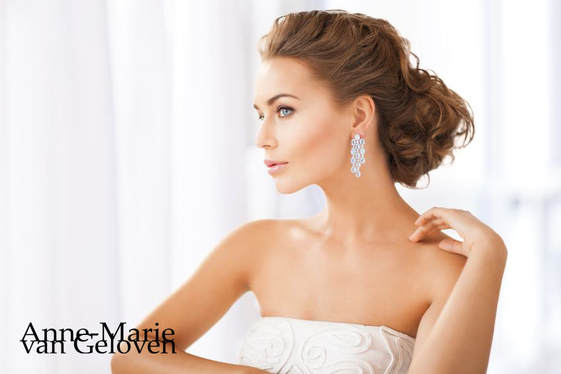
Anything you don't enjoy using or doesn't cater to your needs, is not worth buying.
Skin care is personal and there is a good product for all wallet sizes. However, is a luxury product better than a more affordable one? Is expensive the best? There are actually many factors influencing the prize of a product, other than the prestigious brand-name and advertising costs. Note: This content will mainly apply to skin care catering to the need of healthy, thus not problematic skin types. Problematic (or diseased) skin needs special care which usually is not found in the prestige or luxury skin care segment. Realistic expectations If you are disappointed by the results your skin care products, you might not have bought the right product for you. Make sure that your understand your skin type. There is also a change that you might have too high expectations of what skin care can actually do for you. Your skin will definitely benefit from a good skin care regimen with the right product(s). However, don't expect a metamorphosis, especially not from one day to the next. There are limitations to what skin care can do for your skin and actually what skin care is allowed to do. These rules apply for all skin care products. Formula Some very excellent skin care ingredients are expensive, however there are many very good ingredients which are affordable. Expensive ingredients can be useless "actives" in skin care, and "sound" appealing. Usually "rare" ingredients are expensive, but not all rare ingredients are "the best" actives. The majority of active ingredients only give visible or noticeable results in optimal concentrations. Many skin care products in the prestige or luxury skin care category have long INCI lists (ingredient lists). This will increase the price of the product, but does not necessarily mean that this is the right skin care for you. Furthermore, there is more to a formula than an ingredient list! If the end products texture (also called galenics) is too greasy or too light for your liking, you might not enjoy using the product, and it is not worth the splurge. Luxury brands invest in pleasurable textures of the formula to ensure a positive user experience and high repurchasing rate. A nice texture, doesn't necessarily ensure high performance of a product. Actually the more occlusive products (sometimes regarded as greasy or heavy), are commonly well performing in preventing transepidermal water loss, thus hydration. Note: especially with very long ingredient lists it is highly recommended to try the product before you buy, particularly if you have sensitive skin, as the risk of a skin reaction is increased when the number of ingredients is high. Check also if the product was tested and proven suitable for sensitive skin in this case. Innovation & technology New active ingredients may be exclusively developed by a company and it took them a lot of time, effort and money to collect enough data and proof that this particular active ingredient is effective and safe to use. Products containing such a (probably patented) ingredient can be more expensive than products with more generic frequently used ingredients. Sometimes expensive technology is especially developed or used to improve the formula, texture or container. Packaging Formula's may need a special container or dispenser to be stored appropriately. This is more expensive than a simple standard packaging. Some containers are only luxury and aim to look amazing in your bathroom or on your dresser. Others might be very "inviting", quick and easy to use. If this is what you prefer and enjoy, it might be worth the splurge. Evidence based Evidence is in my opinion compulsory, however not always scientific. Real proof and particularly scientific proof or clinical proof is expensive and time consuming. The best proof is a combination of scientific publications (in peer reviewed journals) and "product-in-use" tests (most similar to daily use) with large representative groups. A claim xx% of testers agree with a panel of 6 or 25 testers, is not enough to be significant. If you want certainty about the benefits of a product, a formula which has proven to be very effective and well tolerated might be worth the splurge. Usually (not always) brands that are recommended by or sold through dermatologists, aesthetic doctors or health care providers have conducted more rigorous research to provide the doctors with evidence, so they feel confident in recommending the product. Likeability brand Some brands have a great story, background, founder and thus a high likeability or appeal. Some huge companies producing large quantities may have lower production costs per product than small companies producing a limited number of products at an external supplier. Some brands "harvest" their own ingredients, have an intense auditing procedure for suppliers or special requirements for the ingredients they use. These factors influence the price of the product. It's certainly not worth the splurge, if you don't like the brand or the company behind the brand. If you have special wishes or requirements, you might be willing to pay for those. Indulge If you love special skin care, indulging "me-moments" and therewith skin care is high on your priority list, you will look at a pricy skin care purchase very differently from someone who just wants an effective moisturiser. If the product or the purchase makes you more happy and you it's use, it might be very well worth the splurge. Need Last but not least, any purchase you make only makes sense if the product fits your needs (skin type and concerns) and your skin care regimen. Try before you buy Some expensive high end products may be worth the splurge, if you enjoy them too. However, there are good affordable alternatives available. The most expensive isn't per se the best or the best for you. Do some research on the product and check reviews from customers. I would recommend to ask a sample and try every product before you buy it and preferably apply it first on the area where you want to use it. For example: applying a product on your hand in the store is not the same as trying it on your face, neck or décolletage! I apologise for the length of this blog post, but the answer is not so easy. Any purchase you make depends on what your are looking for, are willing and able to spend. Invest in proper cleansing before applying any serum or care. If the skin care product is so expensive that you are hesitant to actually use it and you know that it will sit in your bathroom untouched, it's not worth to buy it. If you already own such a product, rather use it and keep the empty container on display. Hope you enjoy and use your skin care. 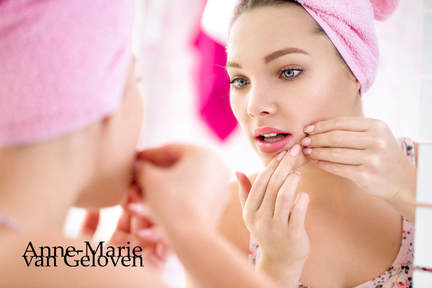
Understandably we want to get rid of pimples as soon as possible and sometimes apply harsh products to our skin in order to shrink them.
Depending on which ingredient is used, you might inflict injury to the skin and it's barrier which is very comparable to a mild burn. There is even a phenomenon called "toothpaste burn". During the healing process there is a risk of scarring. A study published by Tan J. et al in JJD 2017 shows that up to >87% of patients with mild to moderate acne reports atrophic scarring (sunken scar) to some degree. A healthy skin barrier and well hydrated skin will support a the healing process. However, as the barrier is impaired and the skin dried out, the skin's regeneration and healing process will take longer. Therefore be careful with "shrinking" pimples. The same applies for "popping" pimples, as this method by definition will cause injury to the skin. Picking and squeezing pimples will further irritate the skin tissue and delay proper healing. The risk of scarring is increased when the tissue is inflamed. A recent study of prevalence and risk factors of acne scarring confirmed that there is a relationship between the time between onset and effective treatment. Acne scars can be more difficult to treat than acne! It's better to seek expert advice if you have problematic skin. Take care. 7/12/2018 Comments Relation skin pH and ageing process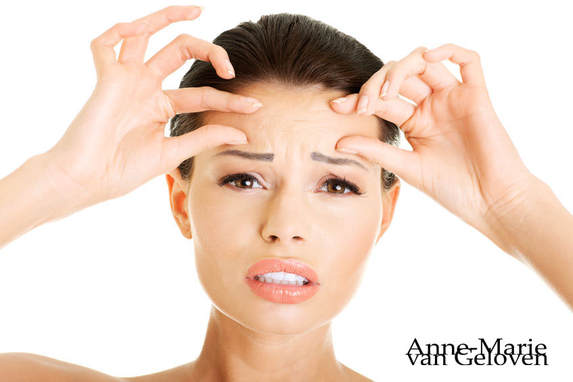
A high pH value contributes to premature ageing skin!
A study published in British Journal of Dermatology showed that women with an alkaline stratum corneum (outer layer of the skin) developed more fine lines and crow's-feet (wrinkles at the outside corner of the eyes) than those with acidic skin over an eight-year period. This might be in part because an alkaline epidermis (top layer of the skin) tends to be drier and more fragile than an acidic one. Irritants can enter the skin and water can evaporate more easily. People with hydrated skin showed a 50% lower rate of wrinkling than those with dry skin. If the acid mantle is not intact, it can make skin more susceptible to inflammation (inflammaging) and lowered enzymatic activity, which again increases the risk of development of signs of ageing. Last but not least, alkaline skin is more prone to sun damage thus photo-aging, because its protective barrier has been weakened. pH balance is fragile. I just mentioned that alkaline skin tends to be drier, however it’s also known that the oils secreted by our skin impact skin’s pH by increasing it. This is one of the reasons that oily skin types can be more prone to acne, as the skin’s pH influences it's microflora. That's a topic for another blog post. You’ve maybe seen some of my previous posts on skin’s pH and it’s actually one of my major topics. This is because healthy skin starts with an optimal pH balance. Click below in the featured categories on “Skin pH” if you like to learn more about pH. If there is a specific topic you are interested in missing, please place a comment below and I will see to it that I address it. Take care. 7/10/2018 Comments Facial toners redundant?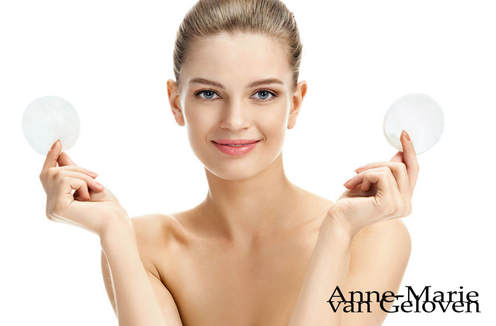
Recently I've read an article in which facial toners were called a redundant step in the cleansing routine. They would not serve any purpose anymore and would be “old-fashioned". I disagree, and will explain why.
Particularly when you prefer wet facial cleansing (water has a pH of 7-8), your skin’s pH goes up and you may consider using a toner to bring it back to normal (~5) before using a moisturizer or serum. This also applies if you use an alkaline cleanser or micellar water. It is common that products which are suitable to be used around the eyes, like micellar water, are adapted to a more “eye-friendly” and less “skin friendly” pH of ~7. Skin prefers a pH of ~5. In my humble opinion, toners are a very important step in every a.m. and p.m. skin care regimen for both healthy and particularly problematic skin types. They refresh, remove left-over debris and make-up and moreover instantly rebalance skin’s pH value. A balanced pH value is the cornerstone for healthy skin. An optimal pH supports skin's microbiome (microflora or "ecosystem") and barrier function. Furthermore, the use of a toner usually helps the penetration and thus efficacy of your care product! Alternatively, you can use “chemical” exfoliating lotions or pads which contain AHA (glycol, citric and lactic acid), BHA (salicylic acid), PHA (gluconotactone), etcetera. Just be careful using them around the eyes or even avoid this area. Hope you enjoy healthy skin & take care. 7/8/2018 Comments Wellness not skin friendly?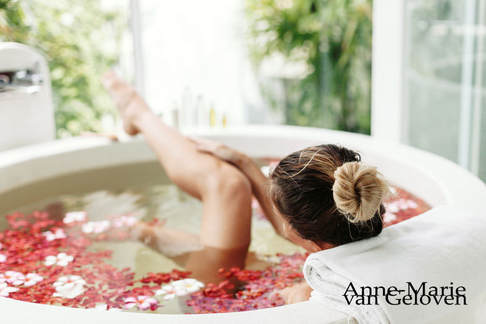
Long showers and bathing, though considered wellness or “home spa” experience, may actually cause a major disruption to our skin’s pH and skin barrier. The same goes for swimming (in salty sea or pool with chlorine).
These activities increase the risk of skin sensitivity and dryness. Water has a pH of 7-8 while our skin’s optimal pH balance requires a pH ~5. To make long showers and bathing a more a skin friendly experience, it is highly recommended to use non-alkaline or slightly acidic gentle cleansers (preferably with a pH ~5). If you have time, apply afterwards a pH rebalancing body lotion or butter. Your skin will surely appreciate it. I would personally never even consider applying an alkaline body product, as it might take the skin several hours to rebalance it’s pH on a large surface. Instead of hydrating your skin, you may in fact increase the risk of water loss; which is a waste of precious time and (expensive) product. Surely, I don't want to discourage anybody from enjoying swimming, relaxing long showers and baths! Just give your skin a "little love" afterwards. 
Although I am writing this blog post as a private person, the skin care company I am working for as a senior global medical manager was one of the first, if not the first to understand the importance of optimal pH balance of the skin, the cornerstone for healthy skin of face and body. Every day, we expose our skin to pH disruptors, like water (usually a pH of 7-8), alkaline soap, sun, pollution and many more. Even though our skin is resilient and eventually will go back to it’s optimal pH (»5), it is common sense and beneficial for our skin’s health to support our skin with a suitable skin care regimen, reducing disruption and promoting pH-balance.
WHAT IS pH? pH literally means the power (or concentration) of hydrogen atoms in a substance. Substances with a higher concentration of Hydrogen atoms than Hydroxide molecules have a greater acidic 'power' (acids), while those with lower H+ (Hydrogen) and higher OH- (Hydroxide) concentrations have less acidic power (bases). The pH scale runs from 0 to 14: 7 is a neutral pH, values below 7 (6-0) are increasingly acidic while values above 7 (8-14) are increasingly basic. There is a 10-fold difference in concentration between these values, meaning that pH 0 is 10 times stronger than pH 1, 100 times stronger than pH 2, and 10,000,000 times stronger than pH 7. With other words; a slight increase in pH, can make a big difference for your skin. SOME PHYSIOLOGICAL FUNCTIONS OF SKIN pH
SKIN BARRIER pH plays a fundamental role in the skin's barrier, acid mantle or buffer, which is formed by secretions from sweat and sebaceous glands as well as the breakdown of fatty acids by beneficial micro-flora. The barrier functions like an invisible protective veil (hydrolipid film) that protects skin’s lipids, moisture loss and unwanted allergens, pollution and bacteria. The acid mantle is at its strongest and most optimal balanced when the skin is slightly acidic, with an average pH of about 5.5 (ranging anywhere from 4.5 to 6.2). However, different areas of the body have slightly different requirements and different optimal pH ranges. The skin of women is slightly more acidic than skin of men. pH BIORYTHM Skin surface pH decreases during normal working hours with maximum values in the afternoon and minimum values during night time. You’ve probably heard that our skin regeneration is most optimal during night time? Indeed, our skin’s pH plays a key role in this too. In separate posts I will address various specific skin pH related topics, as I could go on forever about pH. There is so much to share on this topic (and still to discover) and balanced pH is essential for healthy skin, from cradle to grave, for all skin types & all phototypes. Please check out my other posts, if you are interested. Hope you enjoy healthy skin & take care. 7/7/2018 Comments Skin's pH influences hydration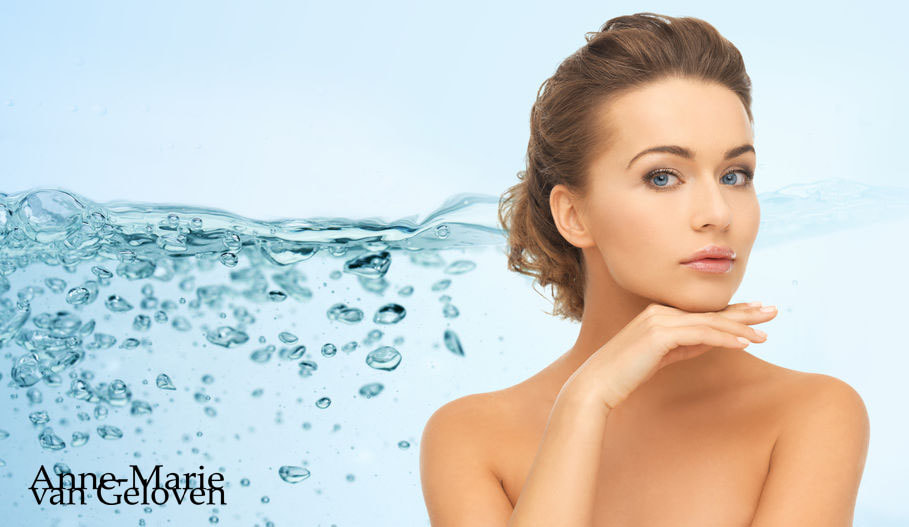
Our skin’s pH plays an important role in many processes influencing skin hydration.
Increased pH (more alkaline >6) values correspond with an increase in trans-epidermal water loss, which we refer to in studies as TEWL, one of the most significant indicators of a good epidermal barrier function. The epidermal barrier protects our skin against (excessive) loss of water and thus protects the maintenance of correct hydration. The skin pH promotes the correct organization of the matrix lipids too, by regulating their surface structure and stability. All leading up to better hydrated skin. It makes sense to pay attention to pH when buying your cleansing and care products. Hope you enjoy healthy skin & take care. 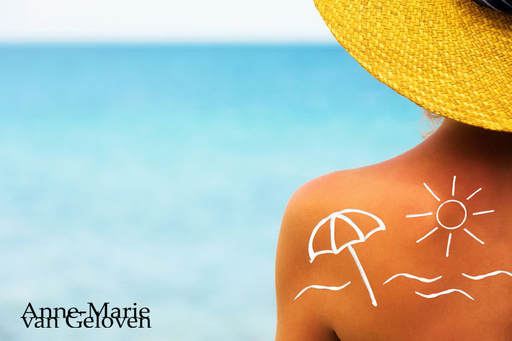
There is data suggesting that skin is more prone to sun damage when skin has higher pH levels (>6). The daily use of sunscreen defends the acid mantle by protecting skin cells from sun damage and increasing the skin's ability to protect itself.
Some active ingredients used in sunscreen can increase skin´s optimal pH and are less effective at lowered pH. Ingredients like zinc oxide and titanium oxide (mineral or physical sunscreens) have an optimal “pH window” in which they are more effective. If the pH of zinc oxide or titanium oxide is too low, the oxides will actually dissolve and thus lose efficacy. I understand that some of you might be in favor of only using mineral or physical sunscreen, however with chemical filters or a mix, you most probably maintain a more optimal pH-balance. This is particularly something to consider if you have acne-prone skin, problematic skin, or a sensitive or (very) dry skin type as your skin barrier might already be compromised. Hope you will enjoy the sun well-protected, while maintaining healthy skin. 7/7/2018 Comments Sleep in your eyes
That sometimes yellowish coloured "goop" in your eyes when you wake up has a function.
The scientific name of "sleep" is rheum, and is in fact a combination of dried tears, oils, skin cells, debris and mucus. The tear ducts produce 24/7 tears to keep the eyes moist and protect our eyes against dirt, irritants, allergens and bacteria. Because you don't blink while you are sleeping, you don't "wipe away" the excess of tears with debris. It can be wet and sticky. After a while, the some of it's liquid may evaporate and the rheum may end up crusty and ends up collected in the inner-corners of your eyes. Although unflattering, it's perfectly normal. Simply remove the rheum using a wet (clean water only) cloth or cotton pad and wipe towards the inner corner of the eye. A few conditions can increase the production of sleep. For example: allergic conjunctivitis or eye infections. The amount of rheum can be so severe in the morning that the eyes are "glued" together and difficult to open. In such cases it's recommended to consult a qualified healthcare provider. Take care. 2/27/2018 Comments Malodorous armpits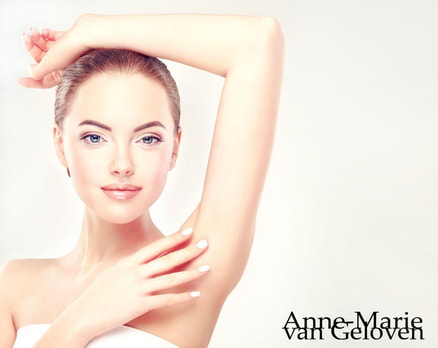
Ever wondered why armpits are smelly, even when using a luxurious and fabulous fragranced deodorant?
The answer might be in your skin’s pH value. Sweat secreted by the glands under our armpits increases local skin’s pH value. This negatively influences it’s microflora, also called skin’s microbiome. A high and unhealthy pH value encourages certain odor-producing bacteria to flourish. Hence, a more alkaline (high) pH value due to (excessive) sweat, does cause smelly armpits or other malodour in other body areas. No fragrance can mask or does counteract this process effectively. That's why we can still suffer from smells armpits while using deodorant. What you can do to balance pH and keep armpits dry Opt for a skin pH friendly deodorant (~5) which reduces perspiration. With less sweat and by maintaining skin’s optimal pH balance, you will automatically reduce nasty bacterial activity. Keep armpits clean Regularly wash away the alkalising sweat and bad bacteria with their smelly by-products. Some skin experts recommend using antibacterial soap. It will reduce all bacterial activity, good and bad. I would rather target only the unwanted bacterial activity with a more skin-flora friendly approach by using gentle cleansing products with a pH value ~ 5. This keeps good bacteria on the skin (we need them for balance) and discourages growth of overly active odor producing bacteria. Make sure that your armpits dry down properly before and after applying a thin layer of deodorant. Shaving Reserve shaving armpits or the use of other hair removal devices for night-time. Gently cleanse and dry your skin prior. Removing hair in the evening and postpone using a deodorant till the next morning will allow your skin to recover a few hours. Mild abrasive hair removal methods can cause micro-injuries to the skin barrier which makes our skin more prone to irritation. Anyway, most of us are less bothered by odor, or at least less aware while sleeping, and we depend more on our pH friendly deodorant to do a good job during day time. Use all skin care products with modesty, except sunscreen! Hope you will enjoy a great summer without malodorous armpits. |
CategoriesAll Acne Ageing Aquatic Wrinkles Armpits Biostimulators Cleansing CoQ10 Cosmetic Intolerance Syndrome Deodorant Dermaplaning Diabetes Dry Skin Evidence Based Skin Care Exfoliation Exosomes Eyes Face Or Feet? Facial Oils Fibroblast Fingertip Units Gendered Ageism Glycation Gua Sha Hair Removal Healthy Skin Heat Shock Proteins Hormesis Humidity Hyaluron Hyaluronidase Hypo-allergenic Indulging Jade Roller Licochalcone A Luxury Skin Care Lymphatic Vessel Ageing Malar Oedema Menopause Mitochondrial Dysfunction Mood Boosting Skin Care Neurocosmetics Ox Inflammageing PH Balance Skin Photo Biomodulation Polynucleotides Psoriasis Regenerative Treatments Review Safety Scarring Sensitive Skin Skin Care Regimen Skin Flooding Skin Hydration Skin Senescence Skip-Care Sleep Slugging Sunscreen Tanning Under Eye Bags Vitamin C Well Ageing Skin Care Wound Healing Wrinkles
Archives
April 2024
|




 RSS Feed
RSS Feed
